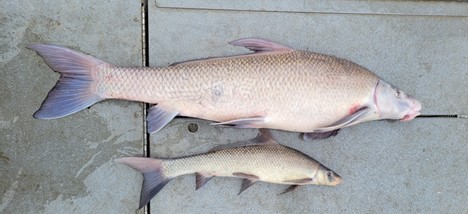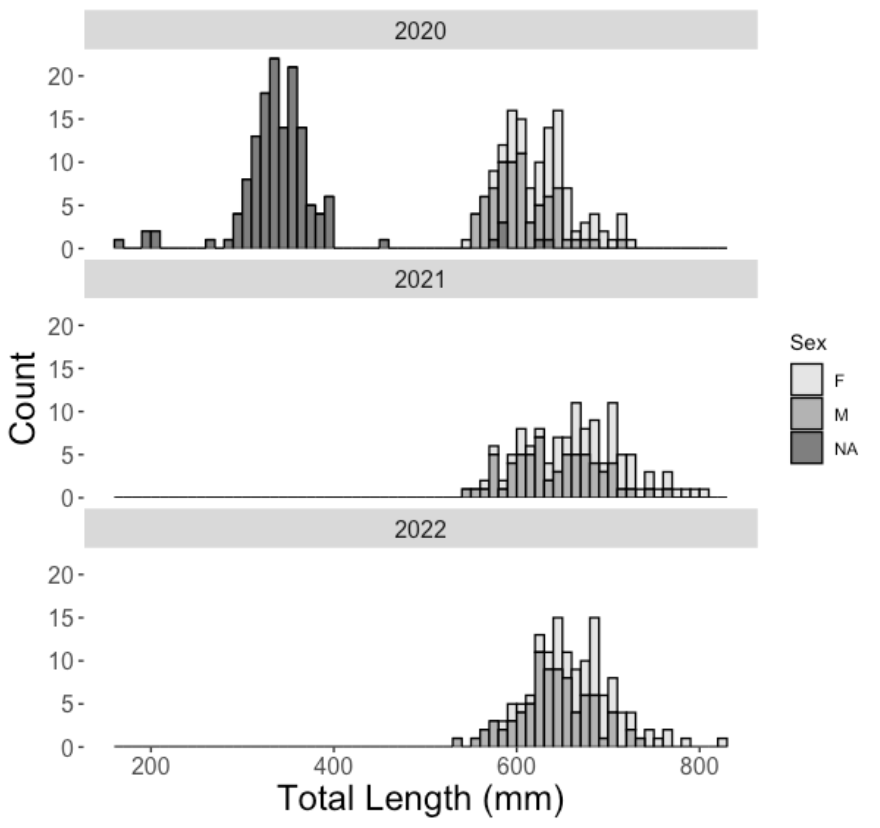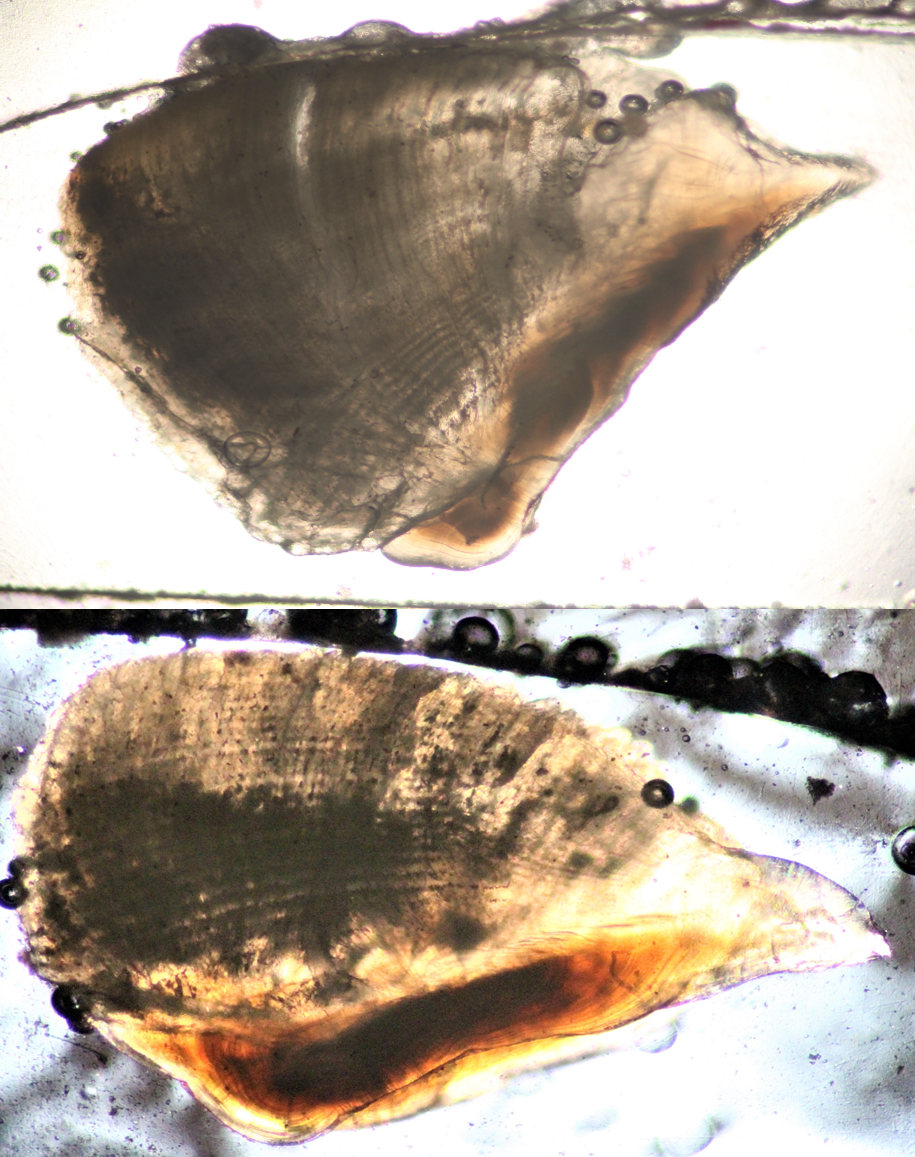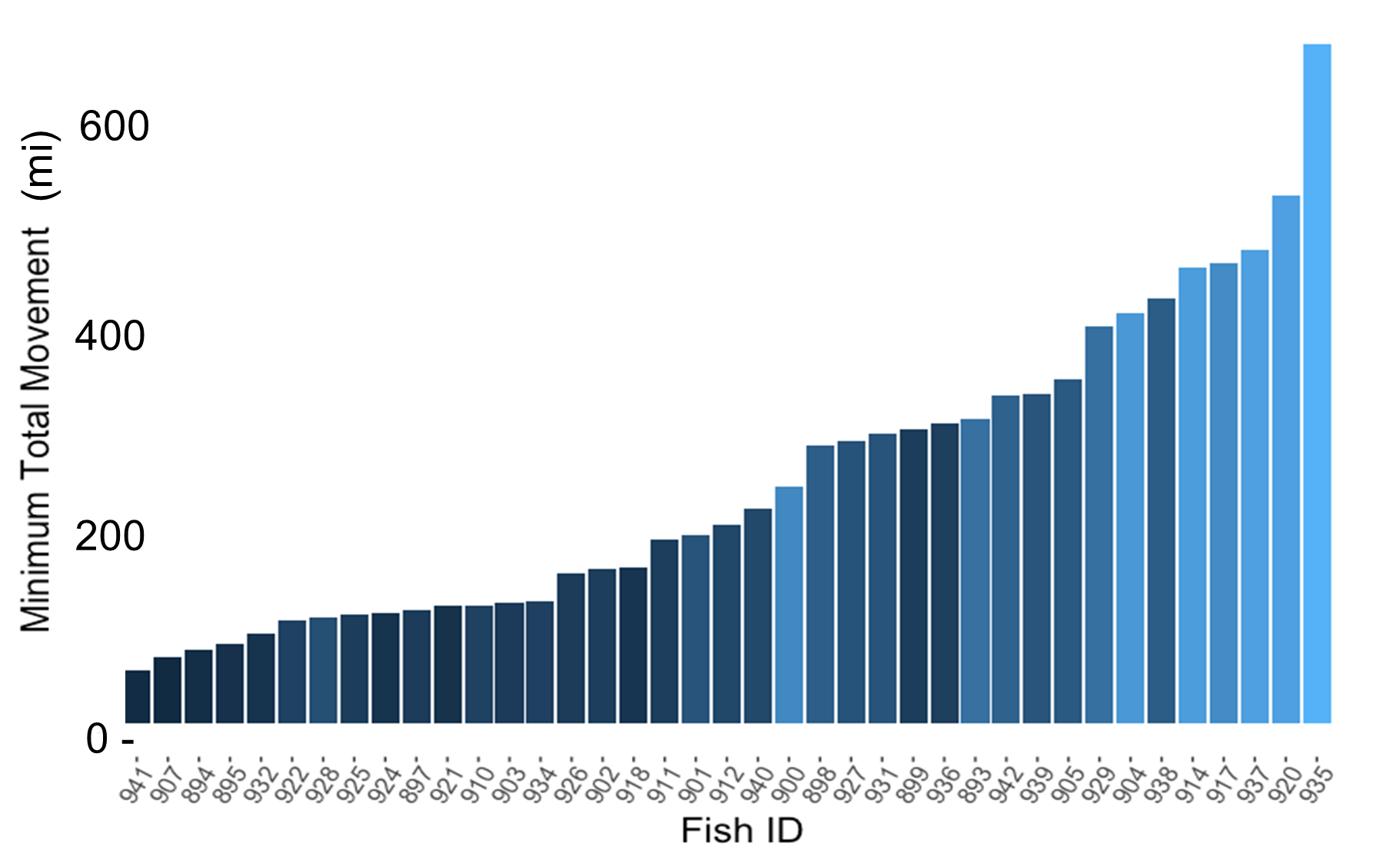Lower James River Blue Sucker Study
What is a Blue Sucker?
Blue Suckers are a native, large-bodied sucker species that live in large rivers in North America. They can grow large (up to 36 inches) and have a unique body shape, with a short head and long, sickle-shaped dorsal fin. Blue Suckers are listed as a species of greatest conservation need in South Dakota and are considered vulnerable to decline throughout most of their range. Limited information has been recorded about Blue Suckers in South Dakota, so a study was implemented to evaluate the population dynamics and movement of this species. This study was conducted in collaboration with the University of South Dakota.
Where did this study take place?
Blue Suckers were sampled in the James River downstream of Olivet to the confluence with the Missouri River in the fall 2020. Additional fish were collected in the Missouri River just downstream of the James River mouth in early spring 2021 and 2022.
Where did this study take place?
Blue Suckers were sampled in the James River downstream of Olivet to the confluence with the Missouri River in the fall 2020. Additional fish were collected in the Missouri River just downstream of the James River mouth in early spring 2021 and 2022.
What information was collected?
We collected length and weight data from 533 Blue Suckers. We collected otoliths and fin rays from a subsample of these fish to compare age estimates. We aged a total of 150 fish using otoliths and 190 fish using fin rays. Fin rays dramatically underestimated ages compared to otoliths, which means it is difficult to compare current Blue Sucker data with data published in the past or on other populations. We collected a large number of 2-year-old fish in our fall 2020 sample. Very few studies have successfully captured juvenile Blue Suckers in other rivers. Additionally, our oldest estimated age was 61 years old, which is nearly 20 years older than the previously estimated maximum age for this species!
We also tagged 50 Blue Suckers with acoustic transmitters in the lower James River to evaluate their movements over two years. Thirty-nine of the original tagged individuals survived, retained their tags, and stayed within detection range during the study. Most fish left the James River and went into the Missouri River in 2021 when low water levels persisted into the fall. When water levels rose in spring 2022, many fish returned to the James River, and most fish swam dozens (if not hundreds) of miles upstream during the spring spawning period. Individual fish movements varied from 53 miles to 685 miles during the two years. Several Blue Suckers made large downstream movements in the Missouri River during the study, including a fish that was detected as far south as the Platte River, Nebraska, before they returned to the James River.
Finally, we are completing a small project to assess the reproductive capacity of these fish. We assessed the fecundity (or number of eggs) of females in the Missouri River near the James River confluence. This information is useful in population models, and there are very few studies that have assessed the relationship between Blue Sucker size and fecundity.
What’s next?
An additional 56 Blue Suckers have been tagged in the James River with acoustic transmitters. Their movements will be evaluated through late 2025 to assess how changes in environmental conditions, such as river discharge and temperature, influence movement patterns. Additionally, work is being conducted to evaluate the natal origin (birthplace) of Blue Suckers collected in the James, Big Sioux, and Missouri rivers by comparing the chemical signatures of their otoliths to these rivers. These studies are being completed in collaboration with South Dakota State University and the University of Southern Illinois.

Adult female Blue Sucker (top) and juvenile Blue Sucker (bottom) caught on the Big Sioux River.

Blue Sucker length frequency histograms by sex from sampling events on the James and Missouri Rivers from 2020-2022.

Blue Sucker otoliths from fish estimated to be 25 years old (top) and 53 years old (bottom).

Estimated total movement (in miles) of Blue Suckers tagged with acoustic transmitters in the James River from fall 2020 to summer 2022.

